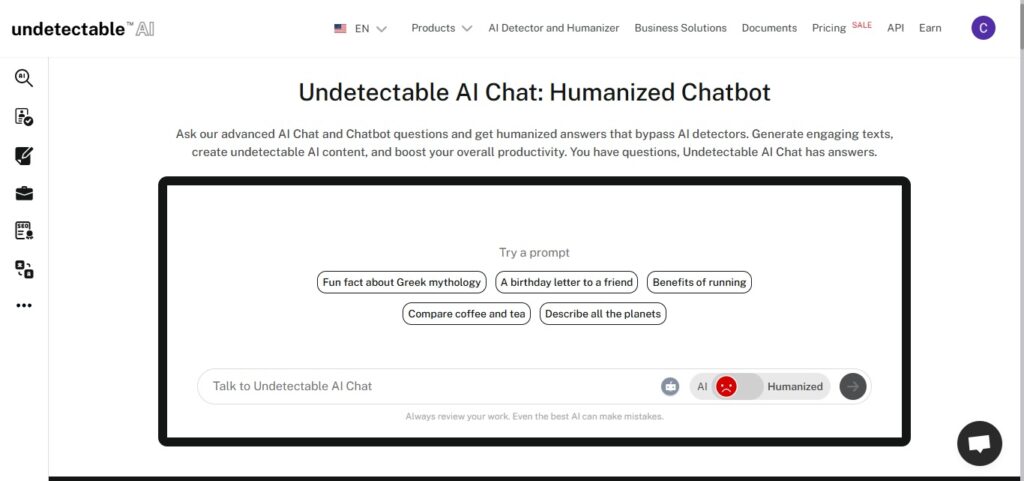Have you ever met someone and the first word that popped into your head is… “obnoxious.” Not “quirky”? Or even “misunderstood”? Just plain and simple: “obnoxious.”
That is what we call the dark arts of negative adjectives.
Grammar books once taught you that adjectives are here to help describe words. But sometimes? Sometimes adjectives just roast.
They judge and sit in a corner like your aunt, just throwing bombs of shades with vocabulary.
In this article, we won’t just uncover the dark side of adjectives. We’re naming names.
We’ll call out the cold, the cruel, the clingy, the condescending, and yes, the clammy.
Strap in. It’s grammar therapy time.
Key Takeaways
- Negative adjectives express unfavorable qualities, emotions, or characteristics about people, situations, or things.
- They serve important purposes in precise communication, creative writing, and honest feedback.
- Context and audience determine whether using negative adjectives is appropriate or counterproductive.
- Many negative adjectives can shift meaning based on tone, situation, and cultural interpretation.
- When applied thoughtfully, strategic use of negative adjectives can enhance writing clarity and emotional impact.
What Is a Negative Adjective?
A negative adjective is a word that throws shade at whatever it’s describing. Think of it as the vocabulary equivalent of a side-eye.
These descriptive words express unfavorable, unpleasant, or undesirable qualities about people, places, things, or situations.
But here’s where it gets interesting. Not all negative adjectives are created equal.


Never Worry About AI Detecting Your Texts Again. Undetectable AI Can Help You:
- Make your AI assisted writing appear human-like.
- Bypass all major AI detection tools with just one click.
- Use AI safely and confidently in school and work.
Some are straight-up insults. Others are just honest observations. And some sit in this weird gray area where they could go either way depending on who’s listening.
Take the word “stubborn.” In one context, it’s criticism. “My boss is so stubborn, she never listens to new ideas.” But flip the script, and suddenly it becomes determination.
“She’s stubborn enough to fight for what’s right.”
Same word, totally different vibe.
The power of negative adjectives lies in their specificity. Instead of saying someone is “not good at their job,” you could say they’re incompetent, inefficient, or unprofessional.
Each word carries its own weight and paints a different picture.
Negative adjectives also serve as emotional shortcuts.
They help us process and communicate complex feelings quickly. When your friend asks about your blind date, “terrible” says everything they need to know without a fifteen-minute explanation.
But with great power comes great responsibility. These words can hurt. They can damage relationships, kill opportunities, and create lasting impressions that are hard to shake.
That’s why understanding when and how to use them matters more than just knowing what they mean.
When and Why to Use (or Avoid) Them
Using negative adjectives is like seasoning food. A little goes a long way. Too much ruins everything.
In professional settings, negative adjectives walk a tightrope. Performance reviews, project feedback, and constructive criticism all require honest assessment.
But delivery makes all the difference. Saying someone’s work is “sloppy” lands harder than calling it “incomplete” or “requiring refinement.”
Creative writing thrives on negative adjectives. They help:
- Create tension
- Establish mood
- Develop character depth
A “sinister” smile tells a completely different story than a “warm” one. Horror writers and thriller authors practically live off these words because it helps them paint atmosphere with precision.
Academic and analytical writing also leans on negative descriptors. Research findings, literary criticism, and policy analysis often require pointing out flaws or weaknesses.
The key is to stay objective while being specific about shortcomings.
Personal conversations are trickier. Friends might appreciate brutal honesty about a toxic relationship or a bad haircut, but timing and relationship dynamics matter.
The same word that builds trust with a close friend could ruin things with someone new.
Social media changes the game. A “boring” restaurant review or “overpriced” product post can affect hundreds of potential customers.
Because of its permanence and reach, word choice online carries more weight than ever.
Avoiding negative adjectives entirely isn’t realistic or helpful. Sometimes things really are awful, people really are difficult, and products actually are defective.
The goal isn’t to erase negative descriptors. It’s to use them with intention, in the right place and time.
List of common negative adjectives

Not all negative adjectives are created equal. Some punch you in the personality.
Others quietly call out your messy desk, your late email, or that one passive-aggressive comment you thought slipped under the radar.
To use them well, you need to know where they land and what kind of mess they might stir up.
For Personality: Arrogant, Rude, Lazy, Greedy
Personality-focused negatives cut deep because they target who someone is, not just what they do.
These stick-like labels require caution.
- Arrogant describes someone who thinks they’re better than everyone else. The type who interrupts to correct minor details or constantly name-drops. It shows up in body language, tone, and how they dismiss others.
- Rude spans a range of inconsiderate behaviors. From interrupting to ignoring social cues, rudeness is often situational. What’s rude in one culture might not be in another.
- Lazy gets tossed around too casually. It implies avoiding effort, but can mask issues like burnout, depression, or different work styles.
- Greedy reflects excessive desire for money or resources. It’s the difference between wanting stability and hoarding at others’ expense.
Other personality-based negatives include manipulative, dishonest, petty, vindictive, narcissistic.
These work best when describing patterns, not isolated incidents.
For Situations or Things: Awful, Broken, Unfair
These describe conditions or objects rather than people. They feel less personal, but still sting.
- Awful is the nuclear option. No redeeming qualities. Awful weather, awful movie.
- Broken applies to anything not working, literally or metaphorically. A broken phone or a broken system.
- Unfair deals with inequality or inconsistent rules. It’s a hard-hitting word because it violates our sense of justice.
Other examples include chaotic, dangerous, inadequate, pointless, overwhelming.
These highlight problems that can usually be fixed.
For Emotions or Reactions: Hostile, Cold, Impatient
These focus on how people feel or respond in the moment.
- Hostile means aggressive or antagonistic. A hostile work environment isn’t just unfriendly…it’s damaging.
- Cold implies emotional distance. Polite, maybe, but unreachable.
- Impatient signals frustration with delays or slowness. It often hides stress or urgency.
More emotional negatives include bitter, resentful, anxious, pessimistic, defensive.
They help explain underlying moods and reactions.
For Appearance or Performance: Messy, Weak, Inadequate
These focus on results and often sound less personal.
- Messy suggests disorganization. It might still function, but looks unpolished.
- Weak means lacking strength or effectiveness, physically or in ideas.
- Inadequate points to not meeting standards. It’s specific and often constructive.
Performance-focused words like sloppy, ineffective, unprofessional help flag areas for improvement without attacking identity.

For exploring nuanced definitions and alternatives for each negative adjective, Undetectable AI’s AI Chat provides comprehensive explanations and context-appropriate synonyms that can help you choose the most precise word for your situation.
How to Use Negative Adjectives in Sentences
Constructing sentences with negative adjectives requires balancing honesty with tact.
The placement, context, and supporting language all influence how these words land with your audience.
1. Start with sentence structure basics. Negative adjectives work as both attributive adjectives (before the noun) and predicate adjectives (after linking verbs).
“The rude customer” versus “The customer was rude.” Both are grammatically correct, but they create different emphasis and flow.
2. Consider your opening approach. Leading with negative adjectives creates immediate impact but can seem harsh.
“Arrogant managers destroy team morale” is more impactful than “Managers who display arrogance often struggle with team morale.” The second version softens the blow while maintaining the core message.
3. Context clues help readers understand your intent. Rather than dropping negative adjectives without explanation, provide specific examples or behaviors that justify the description.
“She’s demanding” becomes more useful as “She’s demanding, expecting immediate responses to non-urgent emails even on weekends.”
4. Qualifying language can moderate strong negative adjectives when appropriate. Words like “somewhat,” “occasionally,” or “can be” create space for nuance.
“He’s somewhat impatient during long meetings” reads differently than “He’s impatient.”
5. Contrast and comparison add depth to negative descriptions. “While she’s knowledgeable about the subject, her condescending tone makes it difficult to learn from her” acknowledges both strengths and weaknesses.
6. Active voice generally works better with negative adjectives than passive voice. “The team found the manager intimidating” is clearer than “The manager was found to be intimidating by the team.”
To confirm proper structure and tone when using strong negative language, Undetectable AI’s Grammar Checker helps ensure your sentences maintain professionalism while accurately conveying your message.

Here’s a practical example of formulating sentences with negative adjectives using Undetectable AI’s AI Chat.
The tool can help you explore different ways to express the same critical observation while maintaining appropriate tone for your audience.
Whether you’re writing performance reviews, creative fiction, or personal correspondence, the key is matching your word choice to your purpose and audience.
Negative adjectives are powerful tools that require thoughtful application.
Negative Adjectives in Context
Context shapes how negative adjectives are received.
The same word can smooth over a conflict or start one, depending on the setting, relationship, and culture.
- In professional settings, clarity and tact matter. “Your presentations feel disorganized” lands better when followed by advice like “Try clearer section breaks and smoother transitions.”
- Academia, writing papers, for example, embraces negative adjectives as tools. In criticism or analysis, they highlight limitations objectively.
- Creative writing leans into them for tone and depth. “Menacing” storm clouds sound more evocative than “approaching” ones.
- In conversation, negative adjective usage depends on closeness. A best friend might appreciate blunt honesty, while a new acquaintance might not.
- Cultural norms, power dynamics, and timing all matter. What feels direct in one culture might sound rude in another. And written words (especially in digital spaces) can come across harsher than intended. So when and how you use them makes all the difference.
Don’t leave without exploring our AI Detector and Humanizer in the widget below!
FAQs About Negative Adjectives
Are negative adjectives always unprofessional?
No. In reviews, legal reports, or technical docs, terms like “inadequate” or “inconsistent” are essential. The key is using them with purpose, not as personal attacks.
What’s the difference between negative and critical?
Negative is descriptive. “Broken” is factual. Critical adds judgment, “pathetic” comes with sting. Knowing the difference helps adjust tone.
Can a word be negative in one context but neutral in another?
Definitely. “Aggressive” in sales might be praised, but frowned on in parenting. Words shift meaning based on audience, tone, and intent.
Sassy, Not Savage
Negative adjectives are the sharp knives of language. They cut through fluff, pinpoint problems, and give voice to frustration but use them carelessly, and you risk causing more harm than clarity.
These words are essential. They help us express dissatisfaction, provide actionable feedback, and create vivid stories.
A well-placed negative adjective turns vague complaints into specific, memorable communication.
But precision matters. Unlike positive descriptors, negative ones tend to stick. They can damage reputations, derail relationships, and linger far longer than intended.
Mastering them means understanding context, audience, and intent. The way you describe a coworker’s unfocused report should differ from how you write a menacing villain.
Use tact in personal conversations, objectivity in academic writing, and strategy in professional settings.
When in doubt, tools like the Undetectable AI’s Grammar Checker can help you polish your sentences, making your writing sound natural, constructive, and human.
Negative adjectives aren’t weapons. They’re tools for growth, clarity, and connection when used wisely. Choose construction over destruction.
Specificity over drama. And when you’re not sure? Precision and restraint usually win.
Need help striking the right tone? Let Undetectable AI fine-tune your words before you hit send.
